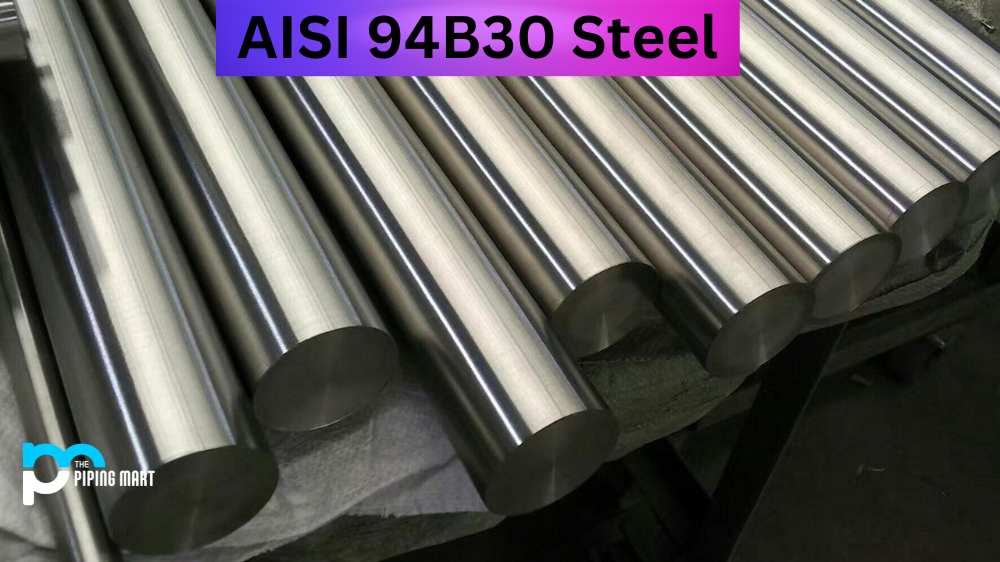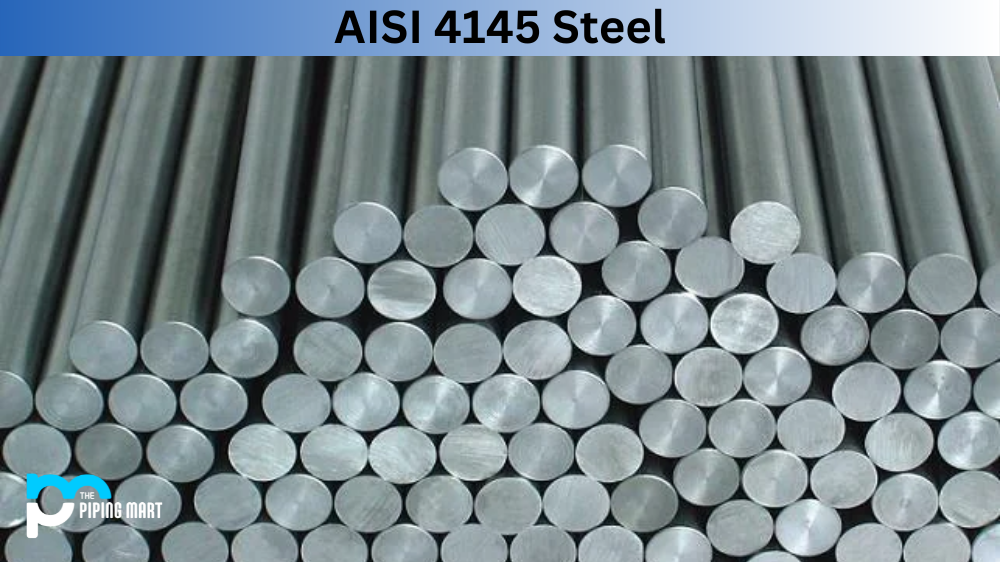1045 Steel is the most commonly used medium carbon steel. It has a wide variety of applications and can be heat treated for added strength. This guide will provide an overview of 1045 Steel, including its composition, chemical properties, mechanical properties, physical properties, uses, corrosion resistance, heat resistance and heat treatment.
1045 Steel Composition
AISI 1045 Steel is composed mostly of iron (Fe), with small amounts of other elements such as manganese (Mn), sulfur (S), phosphorus (P) and silicon (Si). The exact percentage of these elements can vary depending on the grade and type of steel.
| Element | Content |
|---|---|
| Carbon, C | 0.420 – 0.50 % |
| Iron, Fe | 98.51 – 98.98 % |
| Manganese, Mn | 0.60 – 0.90 % |
| Phosphorous, P | ≤ 0.040 % |
| Sulfur, S | ≤ 0.050 % |
1045 Steel Chemical Properties
Its composition determines the chemical properties of 1045 steel. It has a relatively high carbon content compared to other steels, which gives it excellent strength and hardness. It also has good ductility and machinability, making it ideal for many industrial applications such as gears and shafts.
1045 Steel Mechanical Properties
The mechanical properties of 1045 steel are determined by its composition and heat treatment process. The mechanical properties include yield strength, tensile strength, hardness and elongation. AISI 1045 steel is known for its high strength-to-weight ratio, which makes it suitable for many applications where weight is a concern, such as automotive components or construction materials.
| Mechanical Properties | Metric | Imperial |
|---|---|---|
| Hardness, Brinell | 163 | 163 |
| Hardness, Knoop (Converted from Brinell hardness) | 184 | 184 |
| Hardness, Rockwell B (Converted from Brinell hardness) | 84 | 84 |
| Hardness, Vickers (Converted from Brinell hardness) | 170 | 170 |
| Tensile Strength, Ultimate | 565 MPa | 81900 psi |
| Tensile Strength, Yield | 310 MPa | 45000 psi |
| Elongation at Break (in 50 mm) | 16.0 % | 16.0 % |
| Reduction of Area | 40.0 % | 40.0 % |
| Modulus of Elasticity (Typical for steel) | 200 GPa | 29000 ksi |
| Bulk Modulus (Typical for steel) | 140 GPa | 20300 ksi |
| Poissons Ratio (Typical For Steel) | 0.290 | 0.290 |
| Shear Modulus (Typical for steel) | 80 GPa | 11600 ks |
1045 Steel Physical Properties
The composition and heat treatment process determine the physical properties of 1045 steel. These include density, thermal conductivity and electrical resistivity. Its density is 7.85 g/cm3, which makes it slightly heavier than other steels but still light enough for many applications where weight is an issue, such as in the automotive industry or in construction materials. Its thermal conductivity is 43 W/mK which makes it an ideal material for transferring heat in various applications such as cookware or radiators while its low electrical resistivity makes it suitable for use in electrical components such as wires or wire harnesses.
| Physical Properties | Metric | Imperial |
|---|---|---|
| Density | 7.87 g/cc | 0.284 lb/in3 |
1045 Steel Equivalent
| ASTM A29/29M | C | Si | Mn | P | S |
| 1045 | 0.43~0.50 | / | 0.60~0.90 | ≤0.040 | ≤0.050 |
| DIN W-Nr | C | Si | Mn | P | S |
| 1.1191/CK45 | 0.42~0.50 | ≤0.40 | 0.50~0.80 | ≤0.035 | ≤0.035 |
| GB/T | C | Si | Mn | P | S |
| 45 | 0.42~0.50 | 0.17~0.37 | 0.50~0.80 | ≤0.035 | ≤0.035 |
| BS | C | Si | Mn | P | S |
| 080M46 | 0.42~0.50 | ≤0.40 | 0.50~0.80 | ≤0.035 | ≤0.035 |
| JIS | C | Si | Mn | P | S |
| S45C | 0.42~0.48 | 0.15~0.35 | 0.60~0.90 | ≤0.030 | ≤0.030 |
1045 Steel Uses
The most common use of 1045 steel is in manufacturing parts that require high strength but not necessarily high wear resistance, such as gears and shafts or automotive components like axles and crankshafts. It can also be used in construction materials due to its high strength-to-weight ratio making it suitable for load-bearing structures like bridges or buildings with large spans between supports where weight needs to be kept low, but strength needs to remain high.
Corrosion Resistance
The corrosion resistance of 1045 steel depends on its composition. Still, it generally offers good corrosion resistance when compared to other steels thanks to its high chromium content, which forms a thin protective layer on the surface, preventing oxidation from occurring even when exposed to harsh environments like salt water or chemicals like acids or bases .
Heat Resistance
The heat resistance of 1045 steel depends on its composition. Generally, it offers good thermal stability when compared to other steels due to its relatively low carbon content combined with higher levels of chromium which helps prevent oxidation at elevated temperatures up to 900°C (1650°F).
Heat Treatment
Heat treating can be used to increase the strength and hardness of 1045 steel without significantly impacting its ductility or machinability, making it an ideal choice for many industrial applications that require both strength and flexibility at elevated temperatures up to 900°C (1650°F).
Machining
Machining is easy with this type of steel due to its high machinability rating. It is much easier and faster to cut than more brittle materials like aluminium or bronze alloys.
Conclusion
1045 Steel is a multi-purpose carbon steel that can be used for any industrial application due to its strength, hardness and heat resistance properties. It has a good composition for strength and ductility and is suitable for heat treatment to increase strength without significantly impacting machinability. It also has good corrosion resistance, which makes it ideal for use in exposed environments such as chemicals or salt water. Finally, it has good thermal stability, making it ideal for transferring heat in some applications such as cookware or radiators. Overall,1045 Steel is one of the most versatile carbon steel available today, with various uses from automotive components to bridges and buildings.

A passionate metal industry expert and blogger. With over 5 years of experience in the field, Palak brings a wealth of knowledge and insight to her writing. Whether discussing the latest trends in the metal industry or sharing tips, she is dedicated to helping others succeed in the metal industry.




